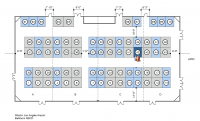We are excited to announce that Haiku developer Ingo Weinhold has recently committed UserlandFS to the repository. UserlandFS is designed to provide, for the first time in Haiku (and the BeOS platform), a stable and flexible environment for file system add-on development. Along with UserlandFS, Ingo has also committed several file system modules, including a Reiser FS 3.6 read-only implementation, a RAM FS (which is still work in progress), and NetFS, a Haiku-specific networking file system. NetFS is a native Haiku network file system that provides peer-to-peer networking capabilities for computers running Haiku on a LAN and includes full support for BFS attributes and live queries.
News
- Haiku, Inc. Financial Report for 2024 is now available
- Haiku R1/beta5 has been released!
- Haiku, Inc. Financial Report for 2023 is now available
- Haiku to mentor 5 students in Google Summer of Code 2024
- Haiku to mentor 3 students in Google Summer of Code 2023
- Haiku, Inc. Financial Report for 2022 is now available
- Haiku R1/beta4 has been released!
- Haiku, Inc. Now Accepting Donations Through GitHub Sponsors
- Haiku, Inc. Financial Reports for 2020 and 2021 are now available
- Media Release: The Haiku Project and Freewear launch Official Haiku Merchandise






